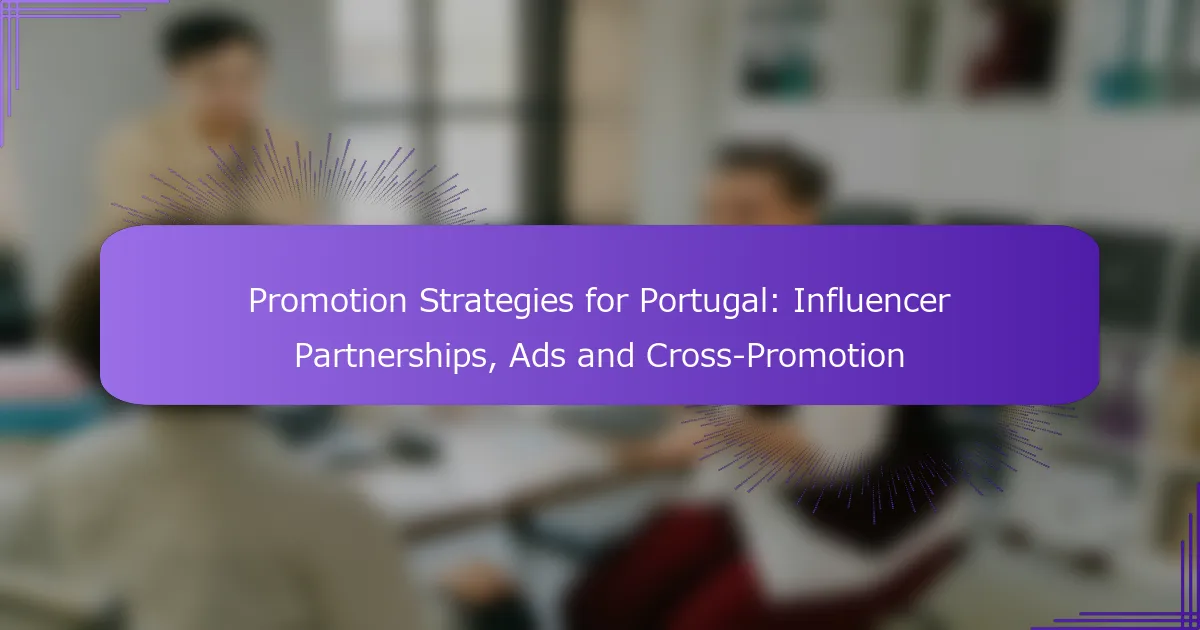To successfully promote products and services in Portugal, businesses should focus on influencer partnerships, targeted advertising, and cross-promotion strategies. By collaborating with local influencers, brands can tap into established audiences and enhance their credibility. Additionally, utilising various advertising methods, such as social media and search engine marketing, can significantly boost visibility and engagement in this unique market.
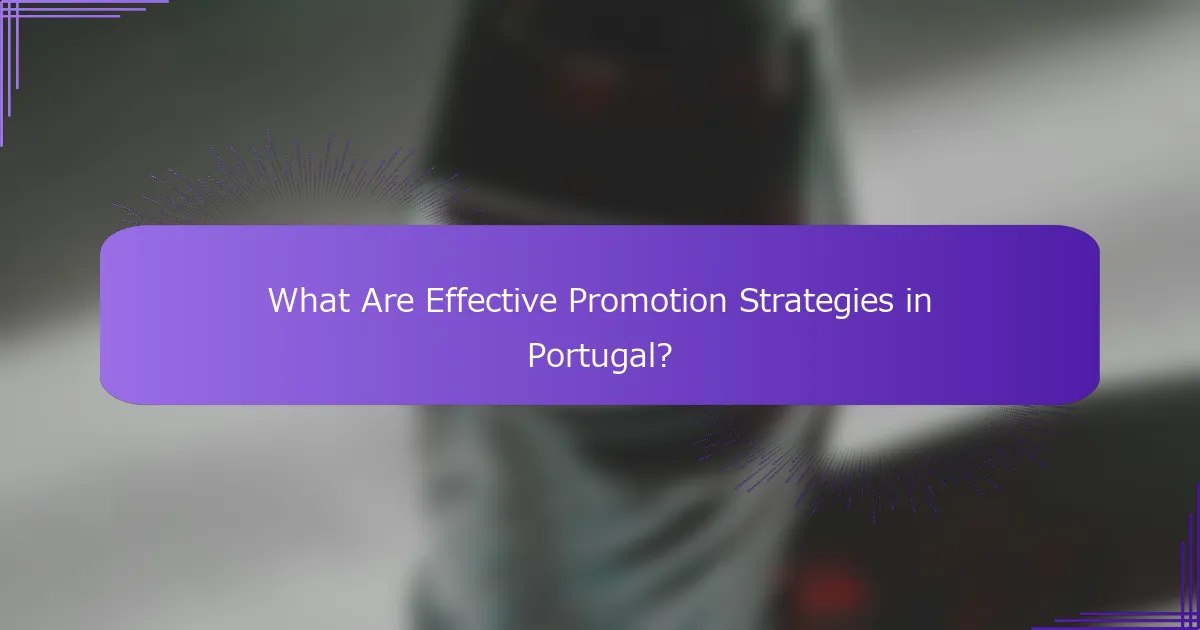
What Are Effective Promotion Strategies in Portugal?
Effective promotion strategies in Portugal include leveraging influencer partnerships, targeted advertising, and cross-promotion techniques. These methods can enhance brand visibility and engagement in the Portuguese market, catering to local preferences and behaviours.
Influencer partnerships
Influencer partnerships are a powerful way to reach audiences in Portugal, as many consumers trust recommendations from social media figures. Collaborating with local influencers who align with your brand values can increase credibility and engagement.
When selecting influencers, consider their follower demographics, engagement rates, and content style. Micro-influencers, who have smaller but highly engaged audiences, can often provide better ROI compared to larger influencers.
Establish clear goals for your influencer campaigns, such as increasing brand awareness or driving sales, and ensure that the content feels authentic to resonate with the audience effectively.
Targeted advertising
Targeted advertising allows brands to reach specific demographics in Portugal through platforms like Facebook, Instagram, and Google Ads. Utilising data analytics enables you to tailor your ads based on user behaviour, interests, and location.
Consider using A/B testing to determine which ads perform best, and adjust your budget accordingly. Ads that highlight local culture or use Portuguese language can significantly improve engagement rates.
Be mindful of advertising regulations in Portugal, particularly regarding data privacy and consumer protection laws, to ensure compliance and maintain brand integrity.
Cross-promotion techniques
Cross-promotion techniques involve collaborating with other brands or businesses to expand reach and share audiences. This can be particularly effective in Portugal, where partnerships can enhance credibility and attract new customers.
Consider joint campaigns, social media takeovers, or bundled offers with complementary brands. Ensure that the partnership aligns with your brand image and values for a cohesive message.
Track the performance of cross-promotional efforts through metrics like engagement rates and sales conversions to evaluate effectiveness and refine future strategies.
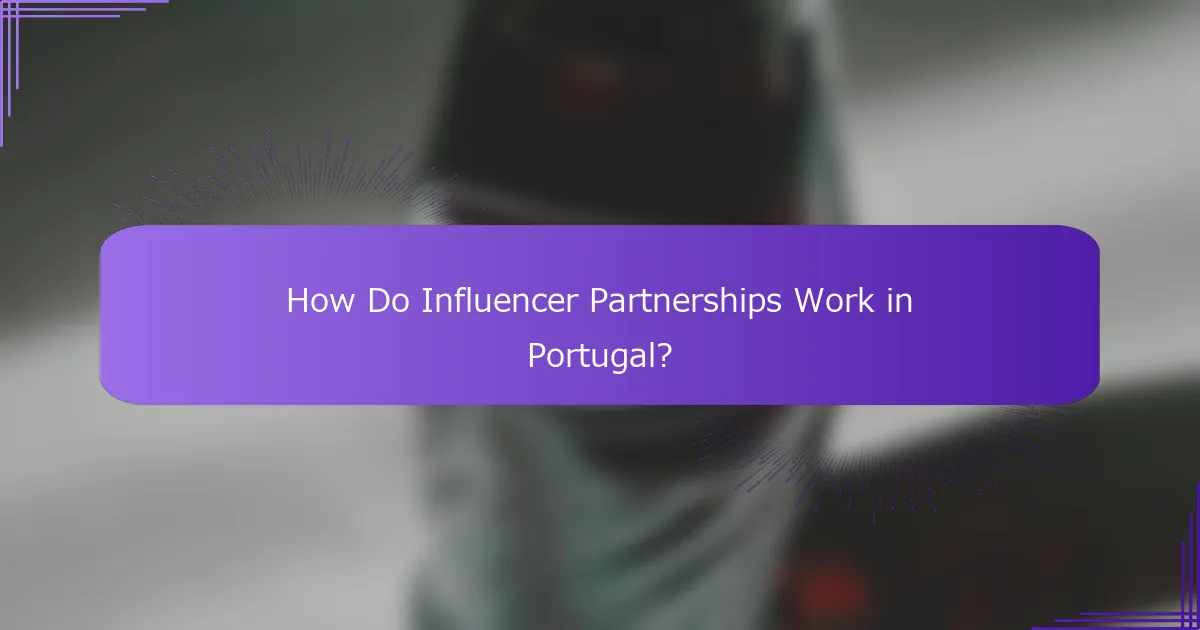
How Do Influencer Partnerships Work in Portugal?
Influencer partnerships in Portugal involve collaborating with social media personalities to promote products or services. These partnerships leverage the influencer’s reach and credibility to engage target audiences effectively.
Identifying key influencers
To identify key influencers in Portugal, focus on those who align with your brand values and target demographics. Look for influencers with a strong following in relevant niches, such as fashion, travel, or technology.
Utilise tools like social media analytics and influencer marketing platforms to assess engagement rates, audience demographics, and content relevance. Aim for influencers who have a genuine connection with their followers, as this can enhance the effectiveness of your campaign.
Building authentic relationships
Building authentic relationships with influencers is crucial for successful partnerships. Start by engaging with their content through likes, comments, and shares to establish rapport before reaching out for collaboration.
When approaching influencers, personalise your communication and clearly articulate the mutual benefits of the partnership. Offering fair compensation, whether monetary or through product exchanges, can also foster a positive relationship.
Measuring campaign success
Measuring the success of influencer campaigns in Portugal involves tracking key performance indicators (KPIs) such as engagement rates, reach, and conversions. Use tools like Google Analytics and social media insights to gather data on campaign performance.
Set clear goals before launching the campaign, such as increasing brand awareness or driving sales, and compare results against these objectives. Regularly review and adjust strategies based on performance metrics to optimise future campaigns.
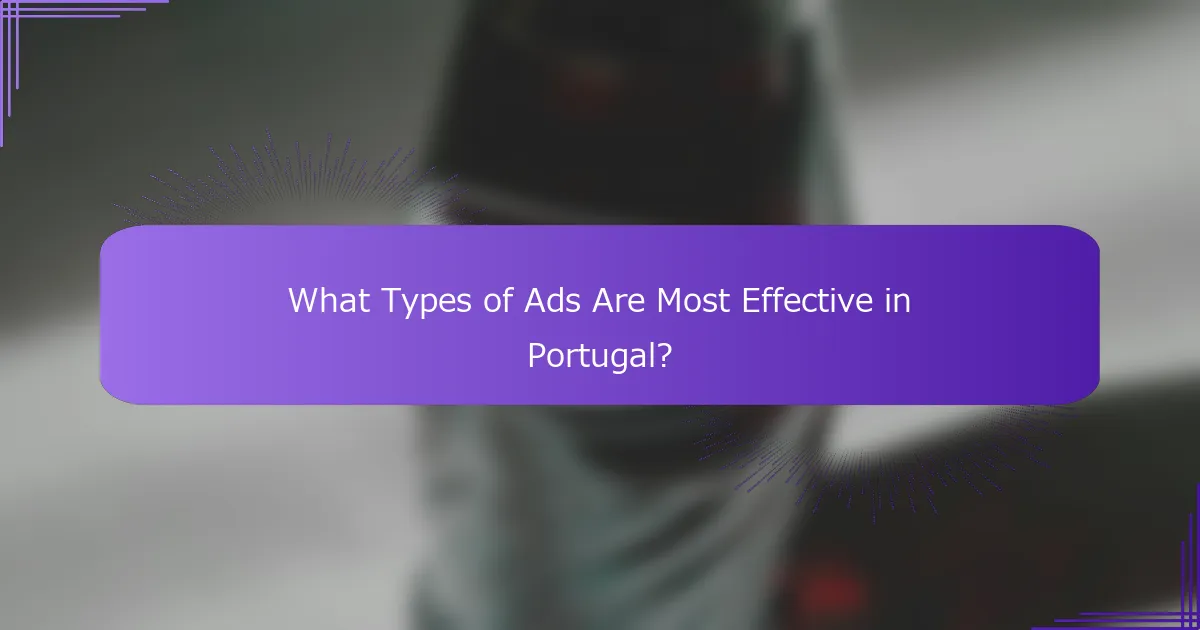
What Types of Ads Are Most Effective in Portugal?
In Portugal, social media advertising, search engine marketing, and display ads are among the most effective strategies for reaching consumers. Each type has unique strengths that can be leveraged to maximise engagement and conversion rates.
Social media advertising
Social media advertising is highly effective in Portugal due to the country’s significant online presence. Platforms like Facebook, Instagram, and TikTok are popular, making them ideal for targeted ads that resonate with local audiences.
When creating social media ads, focus on visually appealing content and clear calls to action. Engaging with local influencers can further enhance your reach and credibility, as they can help promote your brand to their followers.
Search engine marketing
Search engine marketing (SEM) is crucial for capturing potential customers actively searching for products or services. Google Ads is the leading platform in Portugal, allowing businesses to bid on keywords relevant to their offerings.
To optimise SEM campaigns, conduct thorough keyword research and utilise local terms that resonate with Portuguese consumers. Monitor ad performance regularly and adjust bids and targeting to improve return on investment.
Display ads
Display ads can effectively build brand awareness in Portugal, especially when placed on popular local websites. These ads can include images, videos, or interactive elements that capture user attention.
Consider using retargeting strategies to reach users who have previously interacted with your website. This approach can significantly increase conversion rates by reminding potential customers of your offerings as they browse other sites.
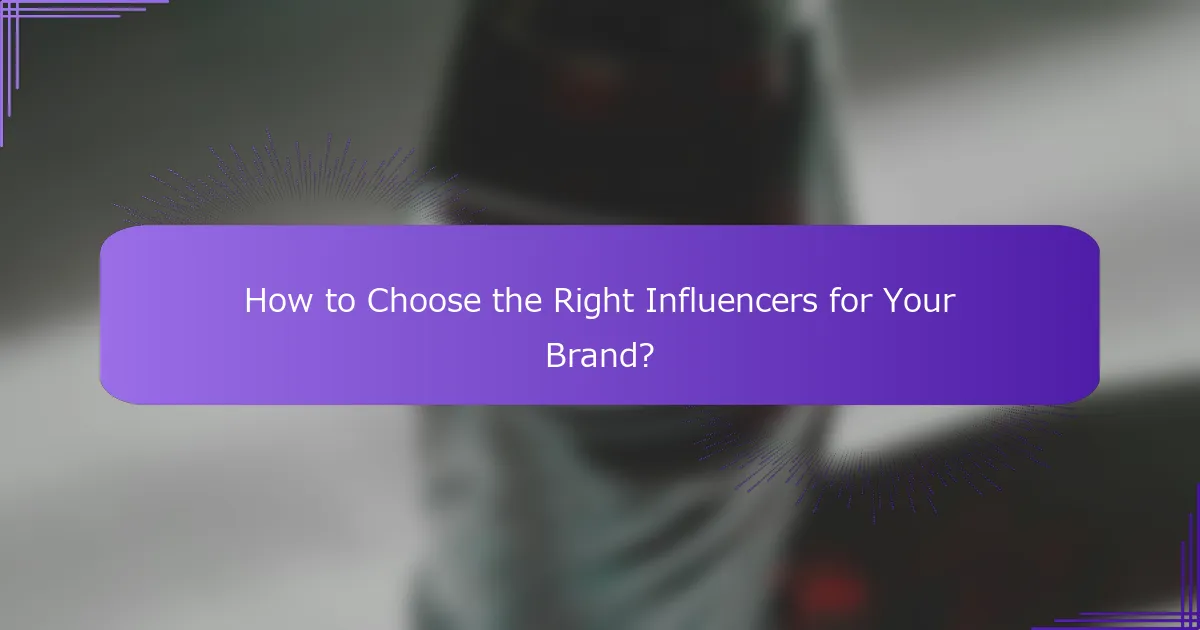
How to Choose the Right Influencers for Your Brand?
Choosing the right influencers for your brand involves identifying individuals whose audience and values align with your own. This ensures that your promotional efforts resonate with potential customers and lead to effective engagement.
Audience alignment
Audience alignment is crucial when selecting influencers. Look for influencers whose followers match your target demographic in terms of age, interests, and location. For example, if your brand targets young adults in Lisbon, choose influencers popular among that age group in Portugal.
To assess alignment, analyse the influencer’s audience demographics, which can often be found in their media kits or through analytics tools. This will help you determine if their followers are likely to be interested in your products or services.
Engagement metrics
Engagement metrics reflect how actively an influencer’s audience interacts with their content. Key metrics include likes, comments, shares, and overall engagement rates. A high engagement rate often indicates a loyal and responsive audience, which can be more valuable than sheer follower numbers.
When evaluating potential influencers, aim for engagement rates that are above industry averages, typically around 1-3% for larger accounts and higher for smaller, niche influencers. This helps ensure that your promotional content will reach an attentive audience.
Content style compatibility
Content style compatibility refers to how well an influencer’s content aligns with your brand’s image and messaging. Review their previous posts to see if their tone, aesthetics, and values resonate with your brand identity. For instance, if your brand emphasises sustainability, partnering with influencers who promote eco-friendly practices can enhance authenticity.
Additionally, consider the types of content they produce, such as videos, blogs, or social media posts. Ensure that their style complements your marketing strategy, whether that’s through storytelling, tutorials, or product reviews, to create a cohesive promotional campaign.
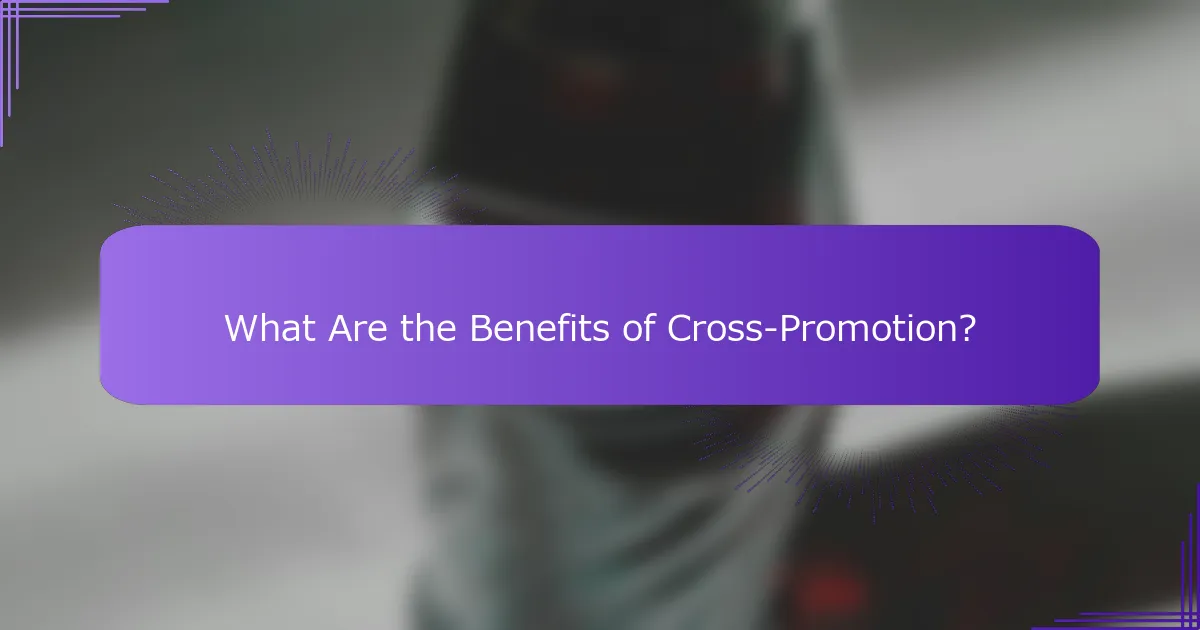
What Are the Benefits of Cross-Promotion?
Cross-promotion allows businesses to leverage each other’s audiences, enhancing visibility and engagement. By collaborating with complementary brands or influencers, companies can reach new customers and share marketing costs effectively.
Increased reach
Cross-promotion significantly expands your audience by tapping into the followers of your partner. When two brands collaborate, each can introduce their offerings to the other’s customer base, potentially doubling exposure without doubling the effort.
For example, a local café might partner with a nearby bookstore. By promoting each other’s events or products, they can attract more foot traffic and online engagement, leading to increased sales for both.
Shared resources
Collaborating on marketing efforts allows brands to pool their resources, which can lead to cost savings and more impactful campaigns. This can include sharing advertising costs, creative assets, or even staff time.
For instance, two brands might co-host an event, splitting venue costs and marketing expenses. This not only reduces individual financial burdens but also enhances the event’s appeal through combined offerings.
Enhanced credibility
Partnering with established brands or influencers can boost your credibility in the eyes of potential customers. When a trusted entity endorses your product or service, it can lead to increased trust and a higher likelihood of conversion.
For example, if a popular local influencer promotes a new skincare line, their followers may be more inclined to try the products based on the influencer’s recommendation. This kind of endorsement can significantly enhance brand reputation and trustworthiness.
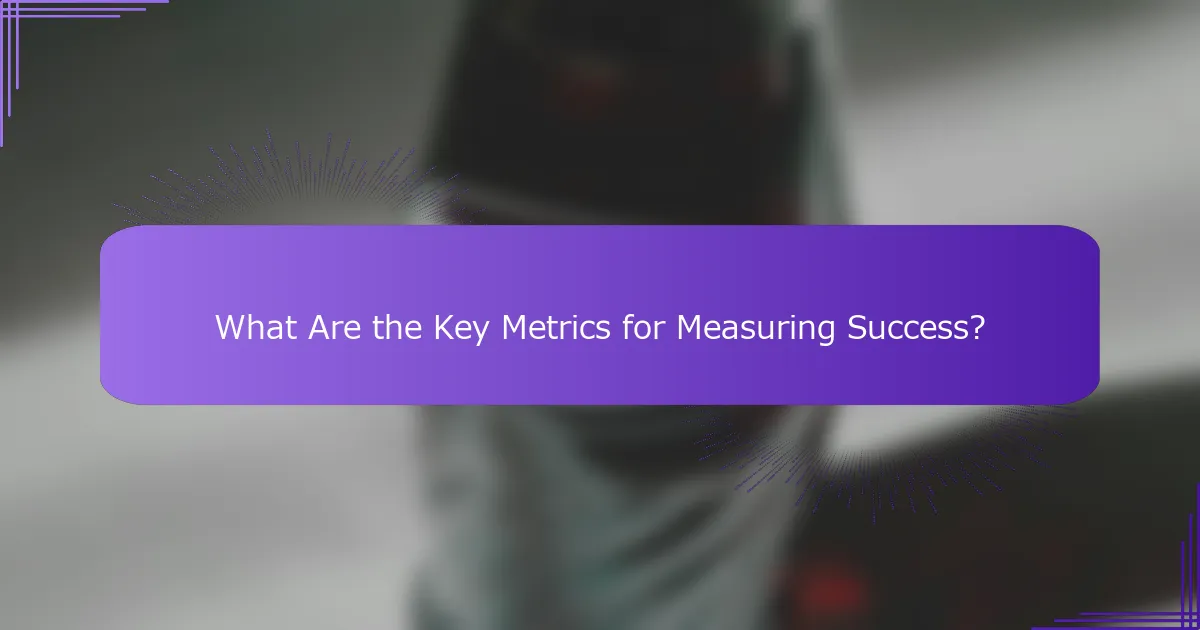
What Are the Key Metrics for Measuring Success?
Key metrics for measuring success in promotion strategies include return on investment (ROI) and engagement rates. These metrics help businesses evaluate the effectiveness of their marketing efforts and make informed decisions for future campaigns.
Return on investment (ROI)
Return on investment (ROI) is a crucial metric that assesses the profitability of a promotion strategy. It is calculated by dividing the net profit from the campaign by the total costs incurred, expressed as a percentage. A positive ROI indicates that the campaign generated more revenue than it cost, which is essential for sustainable growth.
In Portugal, businesses should aim for an ROI that exceeds industry benchmarks, which can vary widely. A common target is to achieve an ROI of at least 200%, meaning that for every euro spent, two euros are generated in return. Regularly tracking ROI allows for timely adjustments to optimise marketing strategies.
Engagement rates
Engagement rates measure how actively audiences interact with promotional content, reflecting the effectiveness of the messaging and delivery. This metric can include likes, shares, comments, and click-through rates on social media and other platforms. High engagement rates often correlate with increased brand loyalty and customer retention.
In Portugal, engagement rates can vary based on the platform and industry. For instance, a good engagement rate on Instagram might be around 1-3%, while on Facebook, it could be lower, around 0.5-1%. To improve engagement, focus on creating high-quality, relevant content that resonates with the target audience, and consider using local influencers to enhance authenticity.
